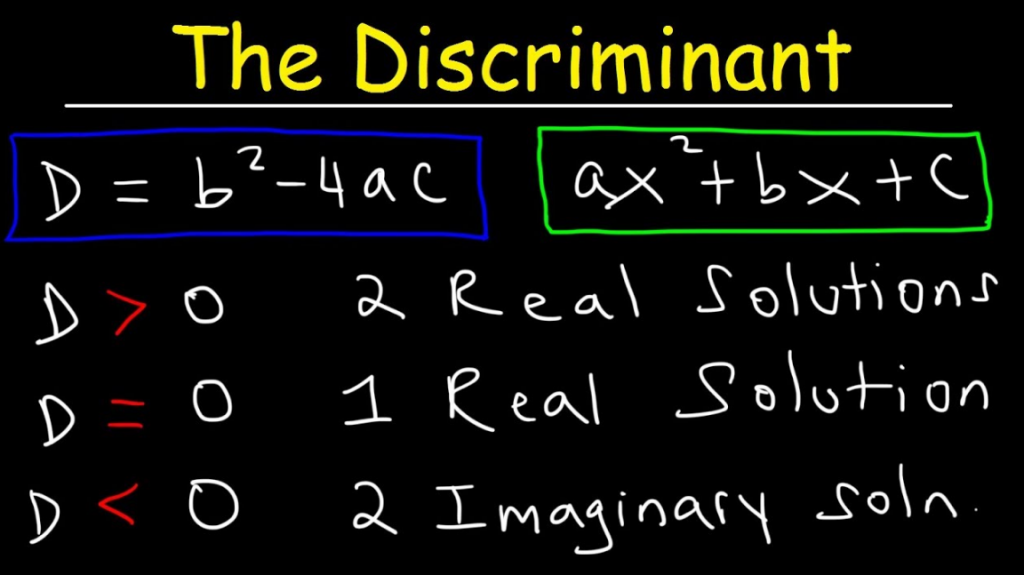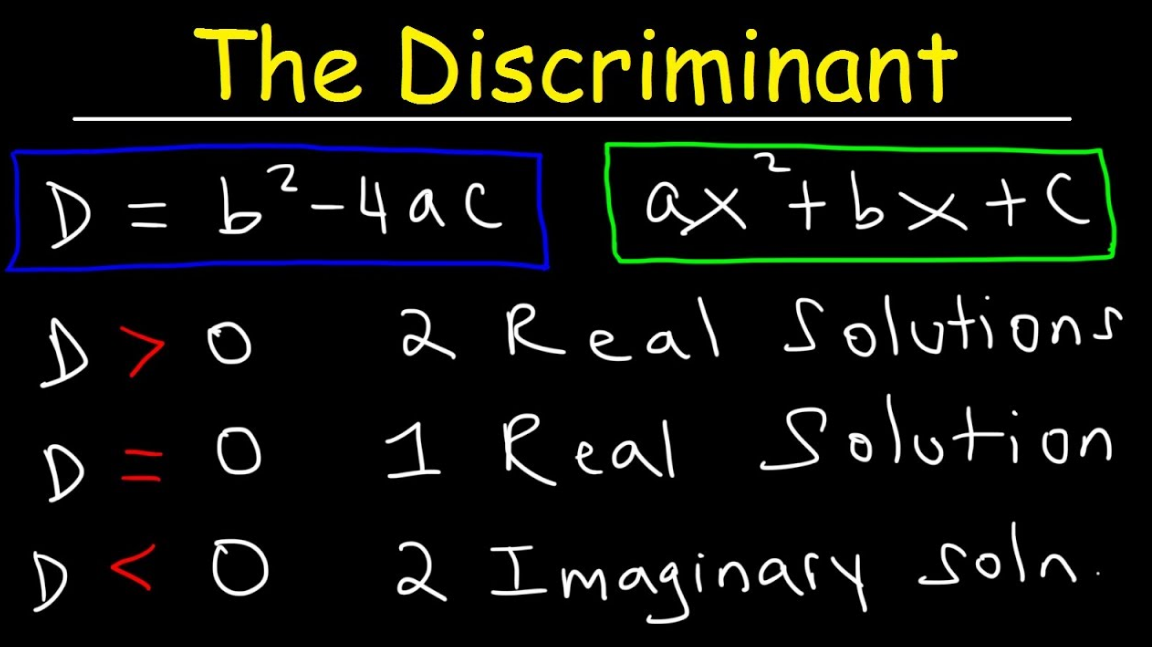Table of Contents
The Discriminant
When does ax2+bx+c=0 have a real solution? Well, we know how to find the solutions using the quadratic formula:
x=−b±√b2−4ac2a.
That makes it look like we can always get solutions. However, we can’t always exercise a square root! Sometimes you’ll see a negative number under the radical. A negative under the radical means there is no real number of solutions to the radical. We can use the formula under the radical, b2−4ac, called the discriminant, to determine the number of roots of solutions in a quadratic equation. There are three cases:
- b2−4ac<0: The equation has 0 real solutions. The graph does not cross the x-axis.
- b2−4ac=0: The equation has 1 real solution. The graph touches the x-axis at one point.
- b2−4ac>0: The equation has 2 real solutions. The graph crosses through the x-axis at two points.

A GENERAL NOTE: THE DISCRIMINANT
For ax2+bx+c=0ax2+bx+c=0, where aa, bb, and cc are real numbers, the discriminant is the expression under the radical in the quadratic formula: b2−4acb2−4ac. It shows us whether the solutions are real numbers or complex numbers and how many solutions of each type to expect.
EXAMPLE
Use the discriminant to determine the nature of the solutions to the following quadratic equations:
- x2+4x+4=0x2+4x+4=0
- 8×2+14x+3=08×2+14x+3=0
- 3×2−5x−2=03×2−5x−2=0
- 3×2−10x+15=03×2−10x+15=0
We have observed that a quadratic equation may have two real solutions, one real solution, or two complex solutions.
In the Quadratic Formula, the expression underneath the radical symbol defines the number and type of solutions the formula will reveal. This expression, b2−4acb2−4ac, is called the discriminant of the equation ax2+bx+c=0ax2+bx+c=0.
Let’s study about how the discriminant affects the evaluation of √b2−4acb2−4ac, and how it helps to determine the solution set.
- If b2−4ac>0b2−4ac>0, then the number underneath the radical will be a positive value. You can always get the square root of a positive, so evaluating the Quadratic Formula will result in two real solutions (one by adding the positive square root, and one by subtracting it).
- If b2−4ac=0b2−4ac=0, then you will be taking the square root of 00, which is 00. Since adding and subtracting 00 both give the same result, the “±±” portion of the formula doesn’t matter. There will be one real repeated solution.
- If b2−4ac<0b2−4ac<0, then the number underneath the radical will be a negative value. Since you cannot find the square root of a negative number using real numbers, there are no real solutions. However, you can use imaginary numbers. You will then have two complex solutions, one by adding the imaginary square root and one by subtracting it.
Conclusion
The discriminant of the Quadratic Formula is the quantity under the radical, b2−4acb2−4ac. It determines the number and the type of solutions that a quadratic equation has. If the discriminant is positive, there are 22 real solutions. If it is 00, there is 11 real repeated solution. If the discriminant is negative, there are 22 complex solutions (but no real solutions).
To learn more about how to determine solutions using the x-intercepts, check out this lesson. Using the discriminant will be really helpful when you’re trying to quickly solve quadratic equation word problems later on!

